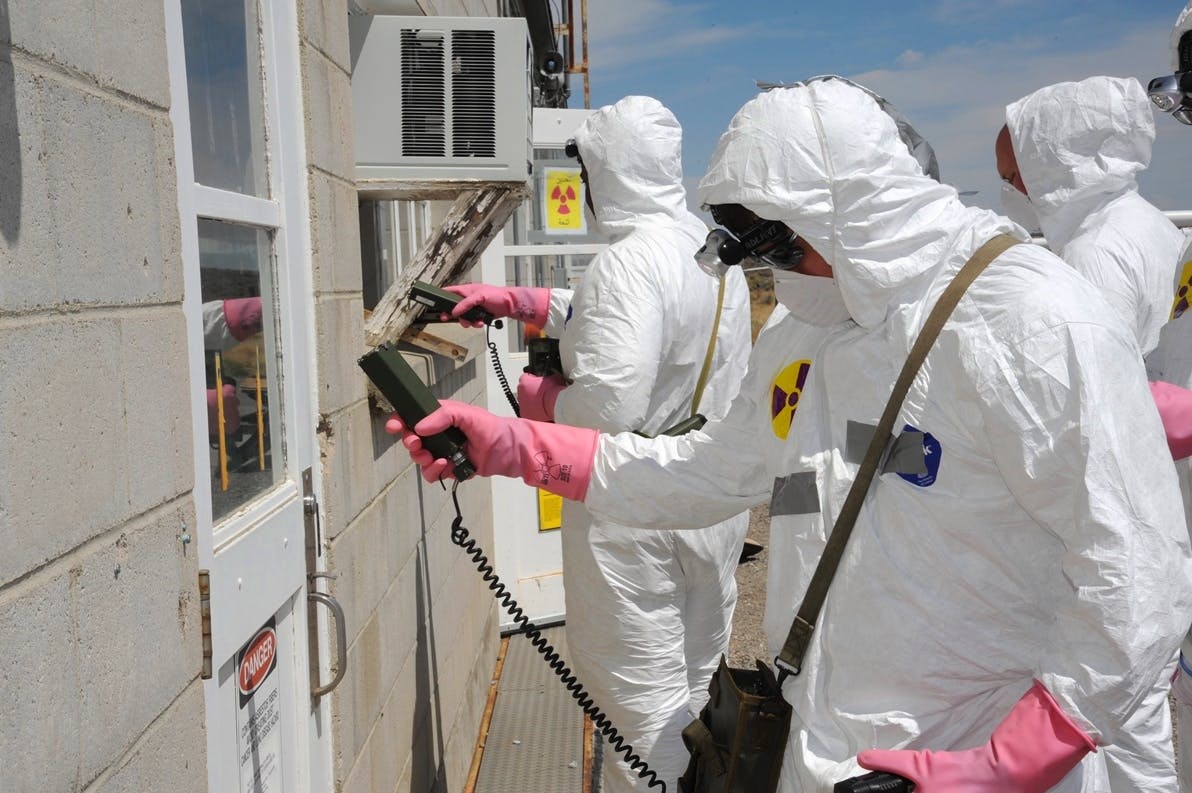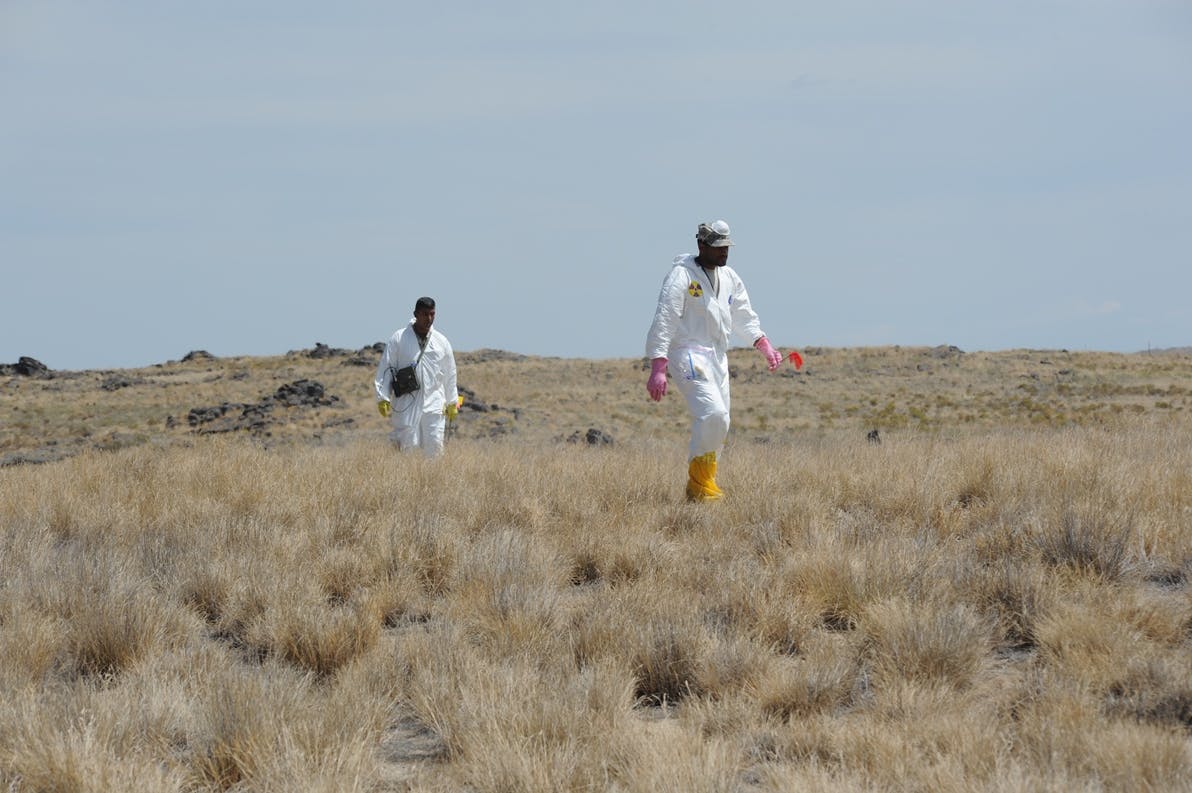The van stops suddenly. The passengers move quickly to adjust personal protective equipment and move toward a facility several yards away. They immediately attend to the injured, survey the perimeter and question those on the scene. Days prior, this team of emergency responders was a group of individuals with different backgrounds and limited knowledge of radiological response.
Military branches from across the U.S. Department of Defense (DOD) register top candidates for this intensive Radiological Hazards and Operators Training and Field Exercise course (RHOT) conducted by the U.S. Army Medical Center and School. These students are brought to the Department of Energy’s Idaho site where they immediately begin training to use radiological monitoring equipment, perform radiological calculations and implement protective measures.
“Over the past decade, we have continued to refine the training to better prepare these radiological emergency responders for the situations they can anticipate in the real world,” said Jennifer Turnage, INL program lead for Emergency Response and Readiness. “Our goal is to provide them with confidence in their equipment and the required skills to manage difficult situations without hesitation.”
Two weeks of intense training has transformed these responders into a cohesive unit able to work together to take decisive actions to secure and survey an area for radiological hazards. Several days of instruction occur prior to being put through a series of intense training environments designed to push their newly acquired skills to the limit and force the newly formed team to rely on each other. The service members’ specialized skills and knowledge are culled through several days of course work and practical exercises.
“We have some of the best and brightest who attend this course at Idaho National Laboratory, and they are challenged by the course work and training,” said Captain Aaron Thompson, DOD lead coordinator for the course. “This training pushes them to excel and make the most of this valuable training experience that you just don’t get anywhere else.”
The top-notch students are met by an impressive staff with decades of experience working with radiological materials and instrumentation. As the nation’s lead research institution for nuclear energy, INL employs experts with extensive knowledge in safeguards, forensics, measurement and interrogation.
INL is one of only a few locations able to provide a realistic training environment that immerses students in scenarios with authentic measurements, equipment and radiological source materials. Several locations across the laboratory’s 890-square mile Site are employed for the training, presenting the students with a range of challenges that includes using their equipment in an isolated and rugged landscape and sweeping buildings with multiple levels and a large perimeter.
“The training objectives are about ensuring that at home and abroad we have radiological responders prepared to engage an environment without hesitation,” said Major Kim Alston, RHOT lane officer in charge and instructor. “These service members will leave this training confident in their skills and ready to take on any situation they incur.”
Since the inception of this joint-training program, hundreds of U.S. service members have been trained in radiation survey methods and techniques and proper use of radiation detection equipment. Through the use of real-world situations, instructors are equipping the participants with the skills required to characterize and mitigate radiological and nuclear hazards, assess the risk, and provide recommendations to decision-makers on how to protect people and the environment from the potential harmful effects of radiation.
Photo: The lab’s vast training areas support advanced radiological exercises in challenging terrain.







